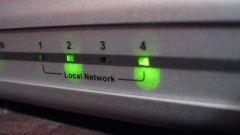Instruction
1
Make sure that you understand the difference existing types of proxy servers: HTTP proxy - the most common type of servers that is compatible with all browsers and support the functionality of web applications;- Socks proxy, subdivided versions of the Protocol to Socks5 and Socks4, is designed to support all of the protocols UDP and TCP/IP, but not compatible with some web applications (mainly used in IRC clients and web pagers);- CGI proxy is a web resource and browser programs.- FTP proxy is used in corporate networks with restricted access to Internet by a firewall.
2
Make sure that the clear difference in the possible uses of these types of proxy servers according to their characteristics:- transparent, or transparent - the destination server of the request can see the proxies used and the IP address of the computer; that is, the destination server receives a sham, a malformed address;- anonymizer provides a secure surfing.
3
Identify the selected proxy server, using the specialized services proxy checker, or use the following visual differences:- CGI proxy is a regular web page where used the meaning of words for the search, and URL;- HTTP proxy is a server name and port number, separated by a colon: www.server.com:xxxx;- Socks proxy looks the same as HTTP but with port numbers 1080 or 1081 (HTTP proxies in most cases has ports 80, 81, 8080 or 3128);- HTTPS proxy - a type of HTTP and cannot be determined visually (using a dedicated service proxy checker).
4
Configure your browser to work with proxyserver - open menu "Service" (for Internet Explorer) and go to "Internet options". Go to the tab "Connections" dialog box and click "network setup". Apply a check mark on "Connect to the Internet through a proxy server" and enter values for name and port in the appropriate fields. Confirm the chosen change by pressing " OK " (for Internet Explorer).





